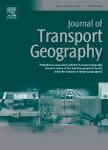版权所有:内蒙古大学图书馆 技术提供:维普资讯• 智图
内蒙古自治区呼和浩特市赛罕区大学西街235号 邮编: 010021

作者机构:Univ Andes Sch Med Bogota Colombia Univ Andes Ctr Optimizat & Appl Probabil Dept Ind Engn Bogota Colombia Univ Andes Dept Civil & Environm Engn Grp Estudios Sostenibilidad Urbana & Reg SUR Bogota Colombia Univ Sergio Arboleda Sch Exact Sci & Engn Ind Engn Program Bogota Colombia
出 版 物:《JOURNAL OF TRANSPORT GEOGRAPHY》 (运输地理学杂志)
年 卷 期:2021年第94卷
页 面:103120-103120页
核心收录:
学科分类:12[管理学] 0202[经济学-应用经济学] 02[经济学] 0201[经济学-理论经济学] 1201[管理学-管理科学与工程(可授管理学、工学学位)] 020205[经济学-产业经济学] 08[工学] 082303[工学-交通运输规划与管理] 0705[理学-地理学] 0823[工学-交通运输工程]
基 金:Salud Urbana en America Latina (SALURBAL)/Urban Health in Latin America project - Wellcome Trust [205177/Z/16/Z] Research office at the Universidad de los Andes
主 题:Bicycle Commuting Gender Generalized additive models Latin America Urban health
摘 要:There is limited evidence on the gender differences and location-specific built-environment factors associated with bicycling in Latin American cities. This study aimed to assess commuting in Bogot a by (1) analyzing the gender-specific trend of the standardized number of bicycle commuters during 2005-2017;and (2) assessing the socio-demographic, community, built-environment and natural factors associated with bicycle commuting stratified by gender. This secondary-data analysis included data from the Household Travel Surveys and Multipurpose Surveys to calculate the number of bicycle commuters per habitant from 2005 to 2017 by gender. We assessed the socio-demographic and built-environment factors fitting generalized additive models stratified by gender using the 2015 Household Travel Survey. Although both women and men increased the standardized number of bicycle commuters, male commuters show a steeper trend than women, evidencing the widening gender gap in bicycle commuting over time. Bicycle commuting was negatively associated with household motor vehicle ownership, steeper terrain slope, longer commute distance, and scarce low-stress roads at trip origin and route. Among women, the availability of bike paths at the trip destination was positively associated with bicycling, while age and being a student were negatively associated with bicycling. Among men, living in areas with the lowest socio-economic status was positively associated with bicycling, while having a driver s license and living close to bus rapid transit stations were negatively associated with bicycling. In conclusion, bicycle and transport infrastructure play different roles in commuting by bicycle by gender and trip stages (origin-route-destination).